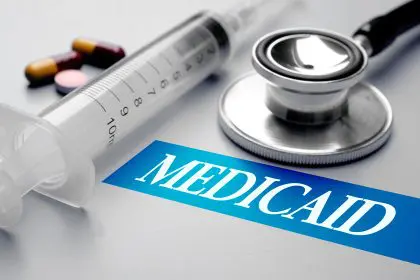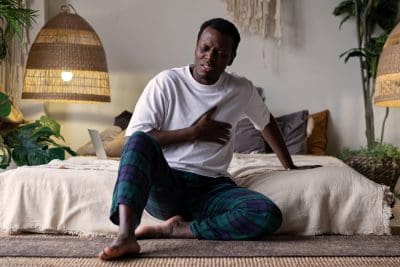In a bustling clinic in downtown Atlanta, Dr. Marcus Richardson witnesses firsthand the silent crisis that’s reshaping Black communities across America. As cardiovascular disease continues its relentless march as the second leading cause of death among Black men, healthcare providers like Richardson face an uphill battle against a condition that often shows no symptoms until it’s too late.
A hidden epidemic takes its toll
The numbers paint a stark picture of a health crisis hiding in plain sight. Black men face a significantly higher risk of developing cardiovascular disease compared to other demographic groups, with the condition claiming thousands of lives annually. Behind these statistics lie countless families forever changed by the impact of this devastating disease.
The troubling reality extends beyond mere numbers. In neighborhoods from Chicago to Houston, families grapple with the aftermath of losing fathers, brothers, and sons to a condition that often develops without warning. Community health centers report increasing cases of heart-related complications, while emergency rooms across the country continue to see a disproportionate number of Black men arriving with advanced cardiovascular problems.
Understanding the perfect storm
The rising tide of cardiovascular disease in Black communities stems from a complex web of interconnected factors. In urban areas, food deserts limit access to fresh, nutritious options, forcing many families to rely on processed foods high in sodium and unhealthy fats. Corner stores replace grocery markets, and fast-food restaurants often outnumber establishments offering healthier alternatives.
Environmental stressors play a crucial role in this health crisis. Many Black men face chronic stress from various sources, including workplace pressures, financial constraints, and systemic inequities. This constant state of stress triggers physiological responses that can damage heart health over time, leading to increased blood pressure and irregular heart rhythms.
Access to healthcare remains a significant hurdle. Many Black men encounter barriers when seeking preventive care, from limited clinic hours that conflict with work schedules to facilities located far from their communities. This lack of regular medical attention allows cardiovascular problems to develop unchecked, often reaching critical stages before detection.
Breaking down barriers to care
Innovative community health initiatives are emerging to combat these challenges. Mobile health units now bring cardiovascular screenings directly to neighborhoods with limited healthcare access. These units, equipped with modern diagnostic tools, offer blood pressure checks, cholesterol screenings, and basic heart health assessments at local community centers and churches.
Local organizations are also stepping up to address the crisis. Community centers partner with healthcare providers to host regular health fairs, offering free screenings and connecting residents with ongoing care options. These events often include cooking demonstrations, exercise classes, and stress management workshops, providing practical tools for heart disease prevention.
The role of lifestyle changes
Prevention strategies start with daily choices that impact heart health. Medical professionals emphasize the importance of regular physical activity, recommending at least 150 minutes of moderate exercise weekly. This doesn’t necessarily mean expensive gym memberships – walking groups, community sports leagues, and home workout routines can provide effective alternatives.
Dietary modifications play an equally crucial role. Nutritionists working in Black communities focus on culturally relevant approaches to healthy eating, showing families how to prepare traditional dishes with heart-healthy modifications. These adjustments maintain familiar flavors while reducing sodium, unhealthy fats, and excess sugar.
Technology and healthcare innovation
Modern technology offers new hope in the fight against cardiovascular disease. Telemedicine platforms make it easier for busy professionals to connect with healthcare providers, while smartphone apps help track vital signs and medication schedules. These digital tools provide crucial support between regular medical visits, helping users maintain better control over their heart health.
Wearable devices now offer continuous monitoring of heart rate and rhythm, providing early warning signs of potential problems. Some community health programs even provide these devices to high-risk patients, allowing for more proactive management of cardiovascular health.
Building community support networks
Success stories emerge from communities that have implemented comprehensive support systems. Church groups, fraternal organizations, and community centers create networks that encourage healthy behaviors and provide emotional support. These networks often organize group activities, from morning walking clubs to healthy cooking classes, making heart-healthy choices more accessible and enjoyable.
Mentorship programs pair individuals with others who have successfully managed their cardiovascular health, offering practical advice and motivation. These relationships provide valuable guidance while creating accountability partnerships that help maintain long-term health commitments.
Education and awareness campaigns
Knowledge remains a powerful tool in preventing cardiovascular disease. Community education programs now focus on making health information more accessible and relevant to Black communities. These initiatives use various approaches, from social media campaigns to neighborhood workshops, ensuring vital health information reaches those who need it most.
Youth education programs target the next generation, teaching healthy habits early and encouraging young people to share this knowledge with their families. Schools partner with health organizations to incorporate heart health education into their curricula, creating a foundation for lifelong healthy choices.
The path forward
As communities continue fighting against cardiovascular disease, new approaches and partnerships emerge. Healthcare providers work more closely with community organizations, creating integrated support systems that address both medical and social aspects of heart health. These collaborations show promising results in improving cardiovascular outcomes for Black men.
The battle against cardiovascular disease requires sustained effort and commitment from all community members. From healthcare providers and community leaders to families and individuals, each person plays a vital role in creating positive change. Through continued focus on prevention, education, and accessible care, communities can work toward reducing the impact of this devastating health crisis.
Hope for the future
Despite the challenges, signs of progress offer hope for the future. Increased awareness, improved healthcare access, and stronger community support systems are making a difference in many areas. As more resources and attention focus on this crucial health issue, communities continue developing innovative solutions to protect and improve cardiovascular health for Black men across America.
The fight against cardiovascular disease represents more than a public health initiative – it’s a crucial step toward ensuring longer, healthier lives for Black men and their families. Through continued dedication to prevention, education, and healthcare equity, communities can work toward a future where cardiovascular disease no longer maintains its devastating hold on Black communities.












